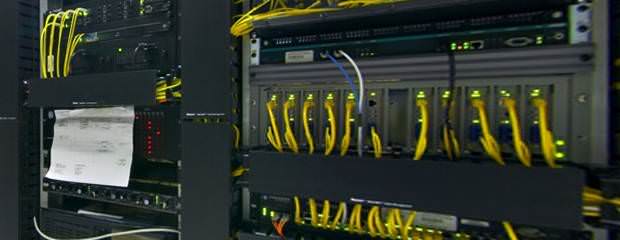
GL conveys its Centralized Supervisory and Control Systems
GL Communications Inc. conveyed today its Centralized Supervisory and Control Systems for Mass Transit Networks.Gaithersburg, MD July 28, 2012
Speaking to the press, Mr. Vijay Kulkarni, CEO of the company said, “a typical centralized train and facilities control system for an underground metro rail transit network in general gathers data from wayside instrumentation for train control and provides supervisory control and data acquisition for managing the various subsystems at the train stations. The term SCADA is used to describe control and management solutions in a variety of industries. SCADA systems collect data from various monitoring and control points. A central computer at that time processes the data, and controls the various subsystems. SCADA systems play a major role in modern industrial enterprises, for instance, public utilities, manufacturing plants, oil and gas stations, and water and electric utilities."
He added, “Typical SCADA systems consists of: Input and output devices, Remote terminal units, Programming logic controllers, Centralized computers, Communications systems and interfaces, User Interfaces, Standard and/or custom SCADA or HMI software.
The Remote Terminal Unit or the Programming Logic Controller plays a key role in collecting and controlling the subsystems/parts. SCADA systems typically require little or no human intervention, even though they have capabilities built-in for such possibilities for remote monitoring and control. They may utilize long or short distance communications, leased T1/wired/wireless networks, for connectivity depending upon the need and circuit availability.”
Mr. Kulkarni furthermore added, “One of the main difficulties that many organizations face is integration of several discrete SCADA systems that have been delivered over time. This is because of the SCADA industry's use of proprietary hardware, software and communications protocols. For instance, in a typical metro rail system, centralized train control and traction power management systems may be similar. Conversely, building management systems for intrusion, fire and security could be very different in that they may use different set of protocols and communication standards and practices. As well, Fire Management Systems must follow the rules established by the State's Fire Marshall and/or Authority Having Jurisdiction. They are developed by vendors in different industry groups and may have different types of specialized devices.
Founded in 1986, GL Communications Inc. Provides technical consulting, engineering and testing services in wireless, telecom, and IT disciplines. Our clients include telecom wireless and landline carriers, mass transit and public safety systems nationwide. We have designed hundreds of wired and wireless telecom network systems over the past 23 years.
GL’s VoIP (Voice over Internet Protocol) and IP products generate / analyze thousands of calls and traffic simultaneously with traffic types just as frames, packets, voice files, digits, video, tones, noise, and fax. Nearly all codecs are supported including G.711, G.729, AMR, EVRC-A, B, C, GSM, iSAC, and many more. Additional features include visual analysis, real-time listening, and recording. The product line as well includes Ethernet / IP Testing capability that simulates and checks frame transport and throughput parameters of Ethernet and IP networks, including delay, errors and other impairments.
GL's Voice Quality Testing product line complements all of GL's products. Using ITU-standard algorithms, GL's VQT provides a widely accepted solution for assessing voice quality in the telecom industry. Voice Quality Testing across multiple networks is available.
GL’s Wireless Products perform protocol analysis and voice quality assessment on GSM, CDMA, UMTS, and LTE (Long Term Evolution, latest standard in the mobile network technology) networks. Connections can be made to any wireless phone with automated call control, GPS mapping and real-time signal measurements.
The broadest range of simulation
GL’s Echo Canceller testing solutions provide the broadest range of simulation and analysis, including line and acoustic echo. GL’s compliance testing per G.168. G.167 and P.340 across TDM, IP, VoIP and Wireless networks is widely accepted in the industry.
GL’s wireless VQT solutions help assessing impairments to voice quality just as poor mobile phone quality, voice compression and decompression algorithms, delay, loss and gain in speech levels, noise, acoustic and landline echo, and other distortions are easily assessed and accurately measured.
Wide variety of communications facilities
GL’s Handheld data testers can test a wide variety of communications facilities and equipment including T1, fractional T1, E1, fractional E1, T3 and E3 modems, multiplexers, CSU, DSUs, T1 CSUs, DTUs, NTUs and TIUs and more. The testers provide convenience, economy, and portability for nearly any interface, including RS232, RS-422, RS-530, X.21, T1, E1, T3, E3, and many others.
GL’s Network Surveillance and Monitoring products include Probes for TDM, IP, VoIP, ATM, and Wireless networks. An open standards based approach provides a scalable, feature rich, real-time access to network characteristics. Centralized or distributed access, efficient transport and database loading allow compatibility with 3rd party and standards based monitoring systems.
- · Rackspace debuts OpenStack cloud servers
- · America's broadband adoption challenges
- · EPAM Systems Leverages the Cloud to Enhance Its Global Delivery Model With Nimbula Director
- · Telcom & Data intros emergency VOIP phones
- · Lorton Data Announces Partnership with Krengeltech Through A-Qua⢠Integration into DocuMailer
